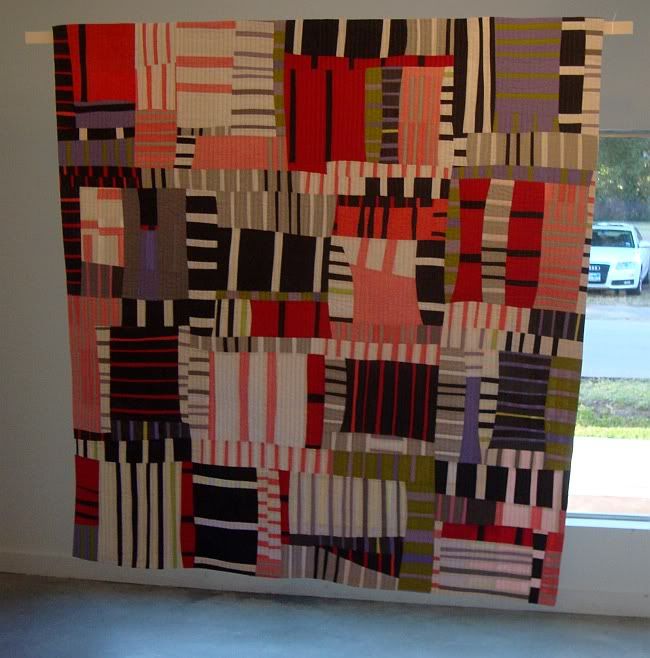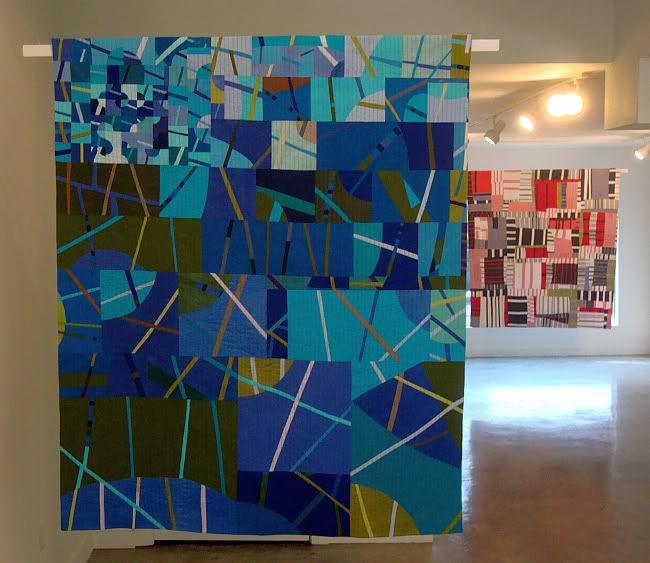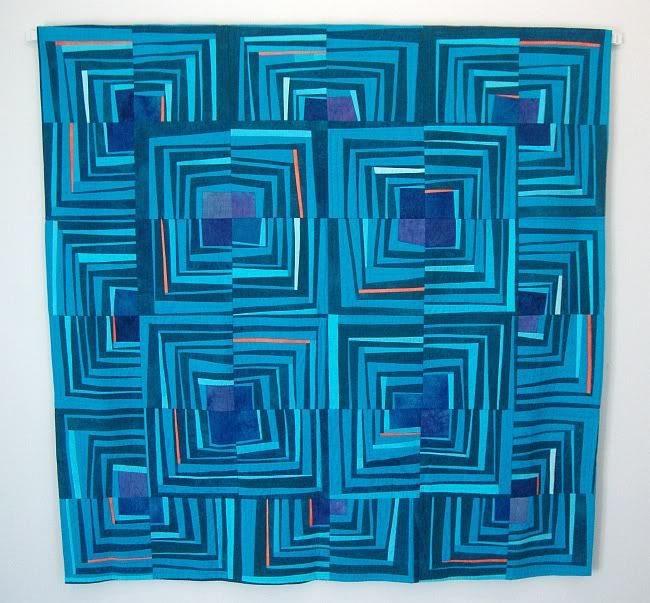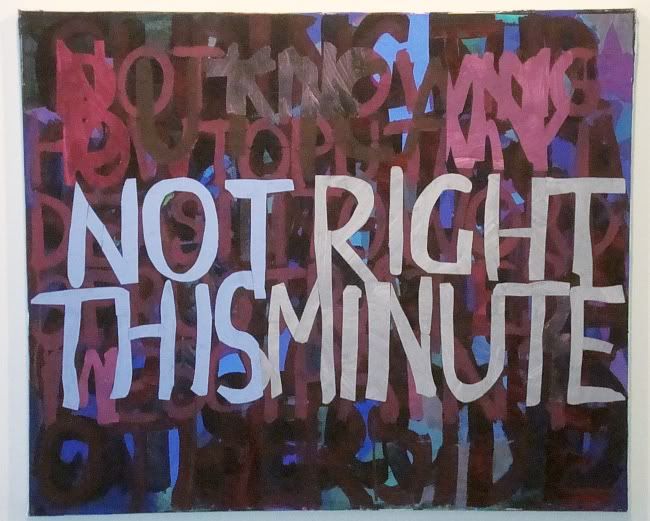
Wendy Hook, Intersections, commercial and hand-dyed cotton
Wendy is a quilter. The only thing I can find out about her on line is that she won a prize in the category of "art quilt" from the Trinity Valley Quilters Guild. The notion that there is a separate category of quilts known as "art quilts" is highly intriguing, especially if we already accept that quilting is an artform. It suggests that within the quilting world (a world about which I am completely ignorant), there are quilters who distinguish their own work from the mainstream of quilting. Such a distinction exist within the world of comics, and the phrase "art comics" is a fairly sharp but contentious distinction within the world of comics. Perhaps it's the same for quilters.
If we use a definition based on the site of the work, per George Dickie, we can say that Wendy's quilts are art quilts because they are in an art gallery. They are denied their functionality by being hung on the wall or from the ceilings. Consequently, we look at them as art objects--particularly as arrangements of color on a mostly flat surface. (We look at them this way while keeping in mind that they could be used to keep us warm in bed, in theory.)
The thing I noticed first was how perfectly chosen Wendy's colors were. For example, in the highly rhythmic quilt, Intersections, reds and pinks dominate with a smaller amount of contrasting greens, an even smaller amount of blue-purple, all framed with blacks and whites that accentuate the rhythms.

Wendy Hook, Rings of Saturn I, commercial and hand-dyed cotton and cotton sateen
This one has a similar color idea--a dominant color, a secondary color, and smaller bits of other colors. But it has something else going on. It sacrifices the jaunty rhythm of Intersections in order to have a nautilus-like spiral expansion. Just as the chambers of a nautilus expand as you go outward in the spiral, we see the squares in this quilt getting bigger the same way. The smallest squares are in the upper left portion. If you look closely, you can see that they gradually get bigger until you get to the largest of them, a large truncated square in the lower left hand corner

Wendy Hook, Zigzag, commercial and hand-dyed cotton
This blue and purple quilt has an abstract design, as quilts traditionally do, but creates a sense of depth by superimposing the four central squares partially over the eight outer squares.

Steven Hook, Not Right This Minute, paper, gouache, acrylic collage on canvas
Layering is what Steven does with his pieces. This act of layering and collage connects his work with his mother's quilting, as does his coloring. That's what was so unusual about this show--that the two artists would be so similar. I'm curious about the direction of the influence (if any).

Steven Hook, installation view, paper, gouache, acrylic collage on canvas
Hook adds an element--language. The phrases are suggestive without quite being meaningful (much less clever, like those in the work of Wayne White or Tara Conley). Just like a quilt, where a whole is created by reusing bits of the same piece of cloth, Stevens work builds up from repeating the word or phrase over and over. This could be read as an echo, or perhaps as the way a person who has suffered a head trauma will repeat a word or phrase when trying to communicate.
Pairing Steven and Wendy Hook was an unusual move, but one that worked because their respective works share just enough to create an interesting dialogue.




No comments:
Post a Comment